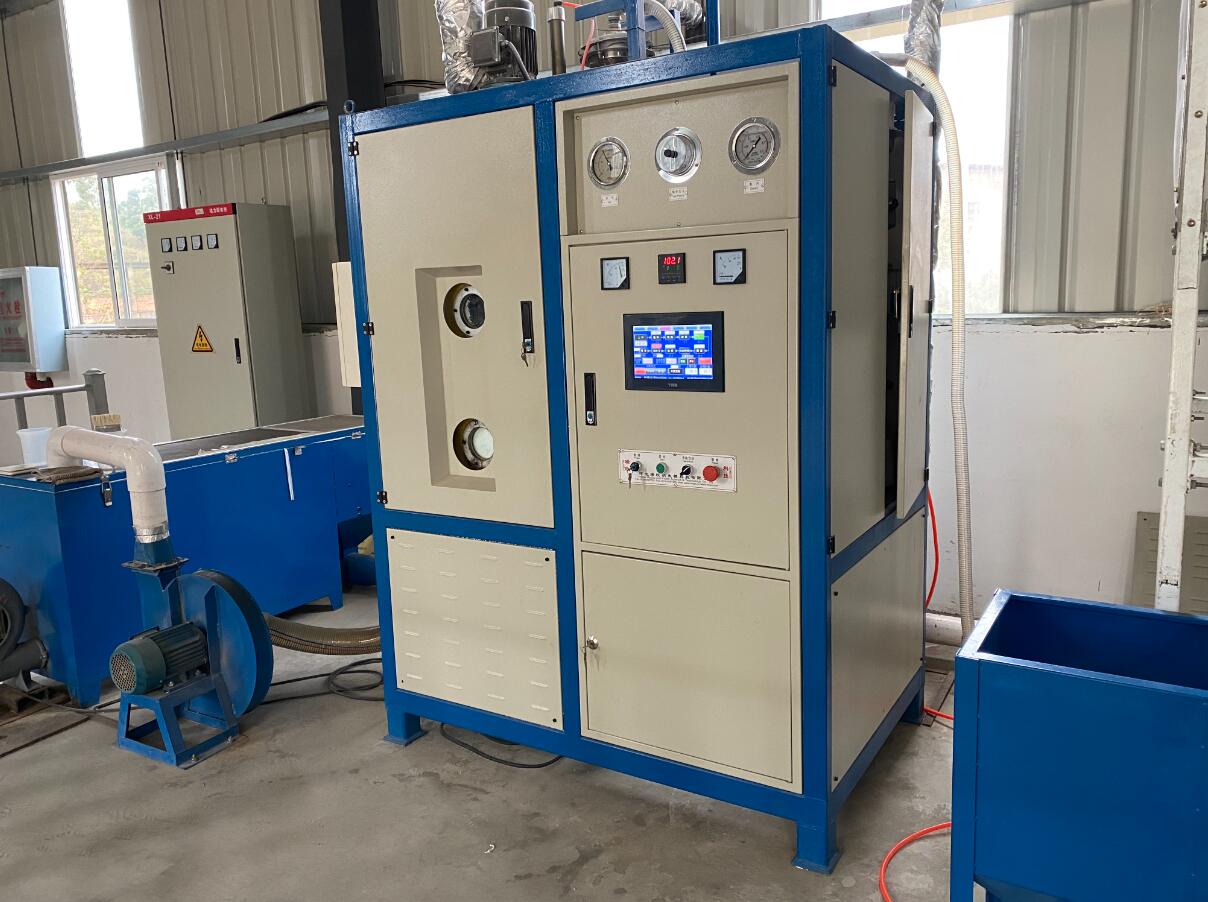Oct. 18, 2023
Machinery
In the world of metal casting, precision and efficiency are key. Two popular methods that have stood the test of time are Lost Foam Casting and Lost Wax Casting. These techniques are vital in creating intricate metal components for various industries. In this article, lost foam casting production line manufacturers 'll explore the nuances and distinctions between these two casting processes, shedding light on their respective advantages and applications.
Lost Foam Casting, also known as the full mold process, is a casting method that utilizes expendable foam patterns. These foam patterns are coated with refractory material and then evaporate when molten metal is poured into the mold. This method is favored for its ability to create intricate shapes with minimal tooling.
Lost Wax Casting, on the other hand, is an ancient technique that involves creating a wax pattern, coating it in a ceramic shell, and then melting the wax out to create a mold cavity. Molten metal is then poured into this cavity, producing a metal component with exceptional detail and surface finish.

Because of the similar name, people sometimes misunderstood and thought that they are one method with different name. However, they are totally different casting method. The similar process in both cases is pattern prcocess. In lost wax casting, this is made from a tooled mould and in lost foam casting, it may be made from a mould or carved from a solid block of foam material. A refractory material is then applied to the pattern and left to dry. The pattern material is then removed and the resulting “shell” mould is ultimately used to form the shape of the final casting. Finally, the outer shell mould is broken away to reveal the finished casting.
There are distinctions between the two casting methods, and these distinctions can ultimately determine the most suitable process for a specific application. In Lost Wax Casting, a sacrificial pattern is crafted from wax. After creating the outer shell, the internal wax pattern is melted away, leaving only the shell mold into which molten alloy is poured to produce the casting. On the other hand, Lost Foam Casting involves crafting the sacrificial pattern within a sealed mold using Expanded Polystyrene (EPS). This EPS pattern can be machined from an EPS block or assembled from EPS elements to form a single pattern. If risers are needed for the casting, they are incorporated into the EPS pattern. Once the outer shell is formed using refractory slurry and allowed to dry, the mold is prepared for casting. The internal EPS pattern remains in place, and sand is compacted around the mold to provide support. When molten alloy is poured into the mold, the EPS pattern instantly vaporizes, allowing the alloy to fill the void and create the final casting.
Both forms of investment casting, Lost Wax Casting and Lost Foam Casting, can produce intricate castings with superb "as-cast" surface finishes and precise dimensions. Furthermore, they both eliminate the necessity for "draft," prevent the formation of parting lines or casting flash, and significantly reduce the need for additional finishing processes. However, when considering cost-effectiveness, Lost Foam Casting can be the more economical choice under specific conditions. This is because the process is simpler, involves fewer manufacturing steps, Expanded Polystyrene (EPS) is less costly than wax, and EPS is easier to handle.
The production of intricate castings can be significantly simplified when individual elements can be joined together using adhesive to create a complete pattern, as seen in the case of lost foam casting. This approach allows for greater flexibility in the size and weight of the final casting compared to lost wax casting. Additionally, lost foam casting is more conducive to prototyping since the pattern can be readily created and adjusted through machining without the need for an expensive mold investment. However, it's important to handle the EPS pattern with care as it is delicate and susceptible to damage.
Based on the requirement of casting part, the ultimate decision regarding to the most appropriate option should be made by expert and design team at the early stage.
We provide turnkey lost foam casting production lines and related equipment, including lost foam EPS molding machines, foaming machines, etc., and provide comprehensive training on lost foam casting to provide strong protection for your foundry. Contact us now.
1. Which casting method is more suitable for jewelry making?
Lost Wax Casting is the preferred choice for jewelry making due to its exceptional surface finish and fine detail reproduction.
2. Is Lost Foam Casting more cost-effective for small production runs?
Yes, Lost Foam Casting is generally more cost-effective for intricate designs and smaller production runs.
3. Are there any environmental concerns with these casting methods?
While both methods have their environmental impacts, Lost Foam Casting is considered more eco-friendly due to its reduced waste production.
4. Which method offers tighter tolerances?
Lost Foam Casting typically offers tighter tolerances compared to Lost Wax Casting.
Can Lost Wax Casting work with a wide range of materials?
Yes, Lost Wax Casting is versatile and can work with a broad range of metals and alloys.
How To Choose The Right Eps Pre-Expander Machine?
What is the difference between lost foam casting and solid casting
Pros and Cons of Lost-Foam Casting
Previous: How to optimize the efficiency of a prismatic lithium battery production line?
Next: EPS Shape Moulding Machine: Shaping the Future of Packaging and Construction
If you are interested in sending in a Guest Blogger Submission,welcome to write for us!
All Comments ( 0 )